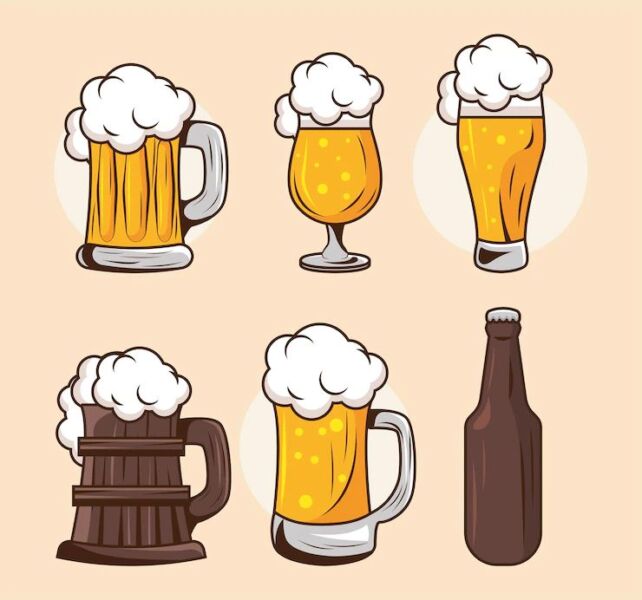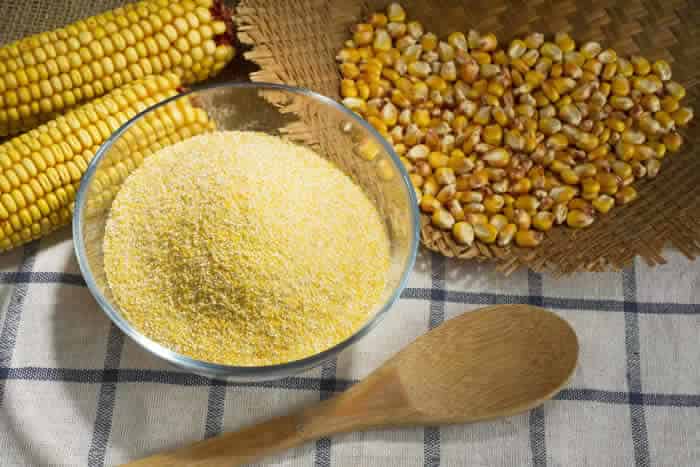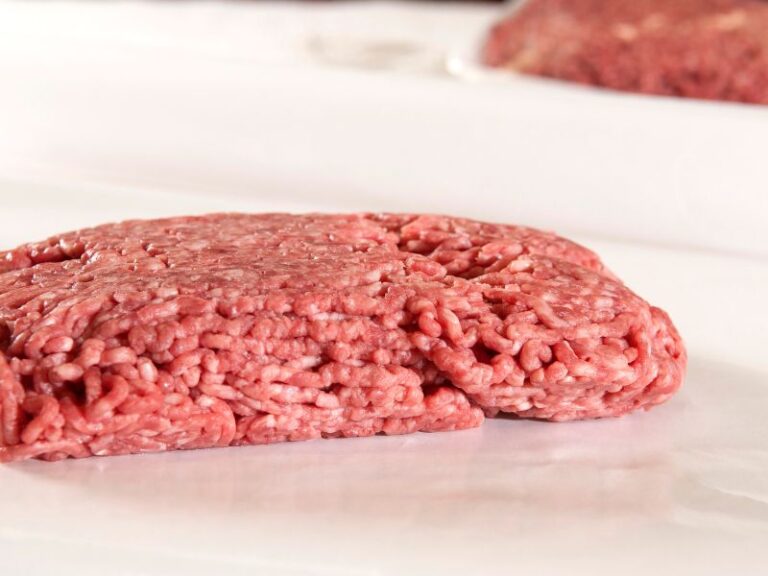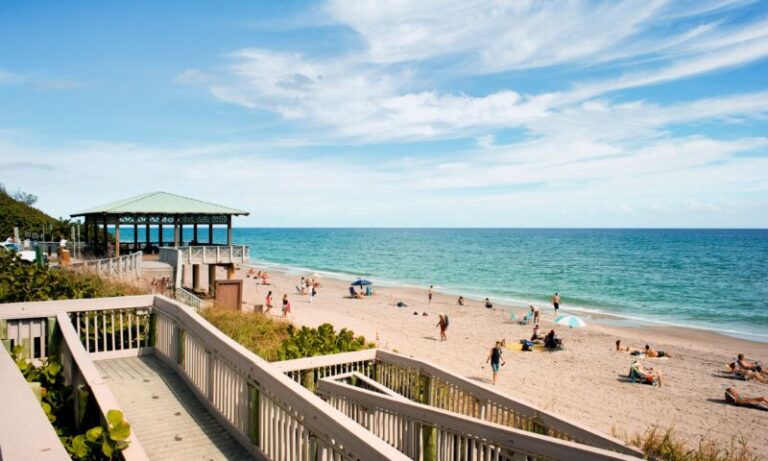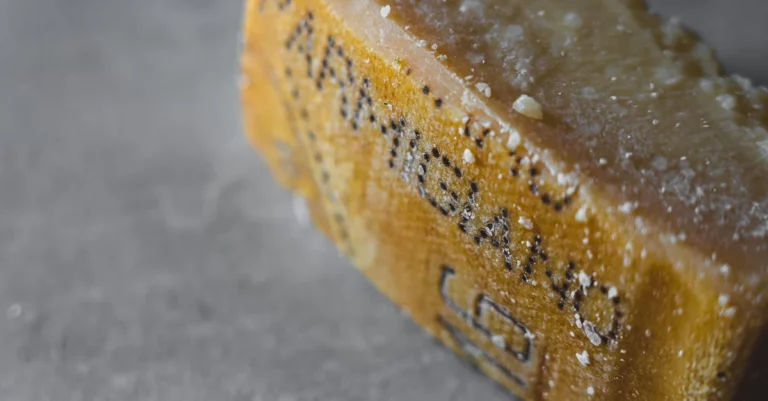How Much Alcohol Is In Beer?
Beer is one of the world’s most popular alcoholic beverages. But with countless styles and brands to choose from, many beer drinkers don’t have a good understanding of how much alcohol is actually in their beer. While most beers have a relatively low alcohol content compared to other alcoholic drinks, the exact amount can vary quite a bit depending on the type and brand.
Understanding the alcohol content in different beers can help you make informed decisions about what and how much to drink. This guide will provide a detailed overview of alcohol content in beer, including how it is measured, typical amounts, and how to drink responsibly.
What is Alcohol by Volume (ABV)?
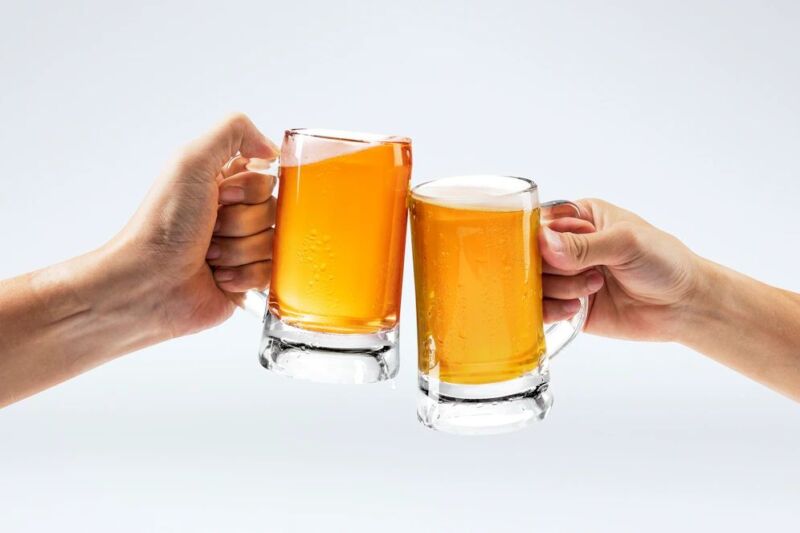
Alcohol by volume (ABV) is a standard measure of how much alcohol (ethanol) is contained within a given volume of an alcoholic beverage. It is expressed as a percentage of the total volume that is pure alcohol.
For example, a beer with an ABV of 5% contains 5% alcohol and 95% non-alcoholic components. The higher the ABV percentage, the more alcohol is present.
ABV provides a useful standard for comparisons between different beers and measuring alcohol content. Many countries regulate the production and sale of beer based on ABV percentages. ABV information is also required on beer labels in most regions to inform consumers.
How Much Alcohol is in Beer?
There is a wide range of alcohol content found in different beers. ABV percentages normally fall somewhere between 2% and 14%, with most beers having an ABV of 4% to 6%. However, certain specialty beers can have ABVs reaching as high as 30% to 40%.
Some key factors affecting alcohol content in beer:
- Type of beer – Ales vs. lagers, craft vs. industrial, etc.
- Brewing methods – Length of fermentation, yeast used, etc.
- Ingredients – More malt and sugars = higher potential alcohol
- Intentional adjustments – Ice brewing, extra fermentation, etc.
- Country regulations – Some limit maximum ABV allowed
Here are some examples of alcohol content across different beer styles:
- Light beer – 2% to 4% ABV
- Regular or standard beer – 4% to 6% ABV
- Craft beers – 4% to 9%+ ABV
- Malt liquor – 7% to 11% ABV
- Strong beers – 8% to 12%+ ABV
- Extreme beers – Up to 30%+ ABV
Alcohol Content in Popular Beer Styles
Beers are often categorized into styles based on factors like color, flavor, production method, and origin. Here are some typical ABV ranges for popular beer styles:
- IPA (India Pale Ale) – 5% to 7.5% ABV
- Hefeweizen – 4.9% to 5.6% ABV
- Stout – 4% to 6% ABV
- Pilsner – 4.5% to 5% ABV
- Brown ale – 4% to 5.5% ABV
- Porter – 4% to 6% ABV
- Pale ale – 4.5% to 6% ABV
- Wheat beer – 4.5% to 5.5% ABV
Keep in mind alcohol content can vary quite a bit even within styles based on the brewer’s goals and methods.
Alcohol Content of Popular Beer Brands

Looking at specific brands, here are the typical ABV percentages for some popular beers:
- Bud Light – 4.2% ABV
- Coors Light – 4.2% ABV
- Miller Lite – 4.2% ABV
- Guinness – 4.2% ABV
- Heineken – 5% ABV
- Corona Extra – 4.6% ABV
- Sierra Nevada Pale Ale – 5.6% ABV
Again, alcohol percentages can vary between batches, so the ABV may not always match the typical values for each brand.
Alcohol Content in a Standard Beer
When someone refers to a “standard” or “regular” beer, this typically means a medium-strength lager or ale with an alcohol content of 4-6% ABV. Specifically:
- A standard beer usually contains 4% to 6% alcohol by volume
- This is equivalent to about 0.6 fluid ounces (18 mL) of pure alcohol per 12 oz (355 mL) serving
- For comparison, a standard 5% beer would contain about the same alcohol as a 1.5 oz (44 mL) shot of 80 proof hard liquor
So while “standard” beers are relatively low in alcohol compared to other drinks, they still impart a meaningful amount of alcohol that impacts intoxication and should be accounted for.
Beer Categories Based on Alcohol Content
Broadly, beers can be grouped into the following categories based on their percentage of alcohol by volume:
- Non-alcoholic beer – contains less than 1.2% ABV
- Light beer – 1.2% to 5% ABV
- Medium or standard strength beer – 5% to 8% ABV
- Strong beer – 8% to 14% ABV
- Ultra strong beer – higher than 15% ABV
Lower alcohol beers like light lagers provide flavor with less intoxication. Strong beers have robust flavors but substantially increase intoxication risks.
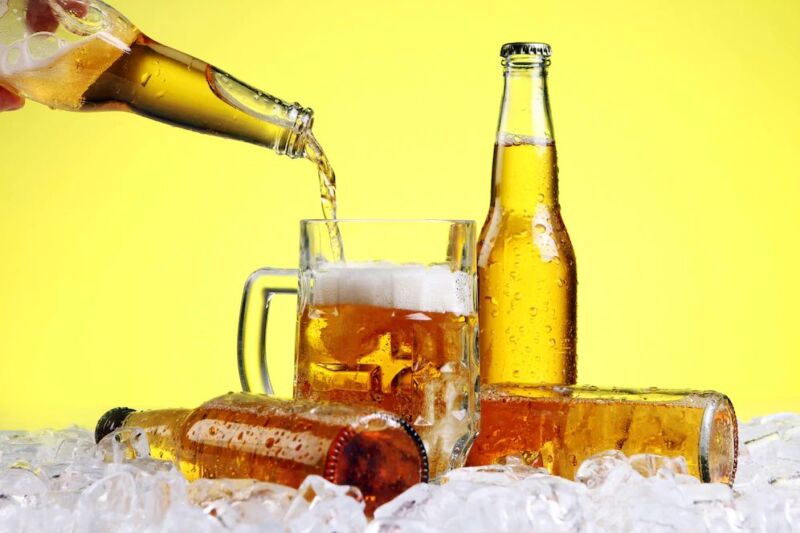
Frequently Asked Questions
What is the beer with the highest alcohol content?
Some extreme beers purposely push alcohol content to the limit. For example, “BrewDog The End of History” reportedly contained 55% alcohol by volume. However, beers above 20% ABV are not common.
Is beer just 100% alcohol?
No, beer contains alcohol (ethanol) dissolved in a mixture along with other components like water and grains. On average beer ranges from 2% to 14% ABV. There are also non-alcoholic beers which contain less than 1% alcohol while maintaining a beer-like taste and mouthfeel.
How much beer can I drink safely?
Moderate alcohol intake is defined as up to 1 drink per day for women and up to 2 drinks per day for men. One drink is equivalent to a 12 oz beer with 5% ABV. Drinking more than this can increase risks to health and safety.
What type of beer is healthiest?
No beer provides substantial health benefits. However, lighter beers and low alcohol beers can offer lower calorie, carbohydrate, and alcohol alternatives to standard options. But you can still enjoy your favorite beers in moderation.
The Takeaway on Alcohol Content in Beer
While beer alcohol content can range widely, most beers contain 4-6% ABV. Understand alcohol amounts in the beers you drink allows you to make smart choices for yourself. Focus on moderation, listen to your body’s response, stay hydrated, and you can safely enjoy the refreshing flavors of beer.
